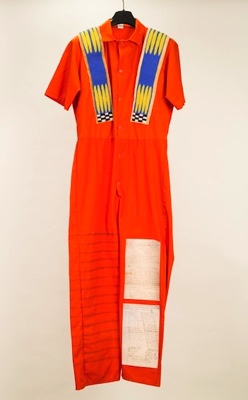Click the logo to go to the Lakota Emergence
homepage
Following the guidance of Wazi, whose name means “pine tree,” the people settled somewhere in the north, the region of the pines. There Wazi and Kanka began the process of teaching the Pte people how to transition into being Lakotas. The Pte people did not change biologically into Lakotas. Instead, they learned how to live culturally in a new way. This new way included doing things they hadn’t done in the underworld, such as hunting, cooking meat, tanning hides and making clothes and lodges.
Ann-erika White Bird contemplates the implications of Lakotas now being “led” by persons or by popular mainstream culture through asking: “Are we all walking around in a prison jumpsuit?” In this passage of the emergence narrative, “The old man led the people so they traveled swiftly and came to the region of the pines,” whereas earlier in the narrative a wolf, acting on directions from Iktomi, “led” these same people from the underworld through the cave to this world. “But not everybody was led by the wolf,” Ann-erika astutely observes. “Only Tokahe was led by the wolf. All the others made a choice to follow him,” and their choice split the people in two.
In this piece, Ann-erika implores us to carefully choose who and what we follow. The piece also reminds us that in daring to take a stand for what one believes in, to not conform to the status quo, one might face arrest and even jail. In these cases, she asserts, “wearing the orange jumpsuit doesn’t necessarily mean you made a mistake.” Ongoing advocacy and education centered on treaty rights is referenced by images of the 1868 Fort Laramie Treaty affixed to the left leg of the jumpsuit. The colors and patterns of the two beaded over-the-shoulder strips of brain-tanned leather are drawn from traditional sources and therefore, she says, “while you’re wearing that prison jumpsuit you’re still representing who you are as a person, that you have a place you’ve come from and you have a place where you’re going.” The temporal analog to this spatial referencing is the painted horizontal lines on the right leg of the jumpsuit. They are tally marks that record the passage of time, a technique prisoners sometimes use to indicate how long they have been incarcerated. Coincidentally, in this case, they also reference that this is the fifteenth vignette of the exhibit.
The old man led the people so they traveled swiftly and came to the region of the pines. Then he and the old woman showed them how to hunt the game and how to care for the meat and the skins, and how to make clothing and tipis.

